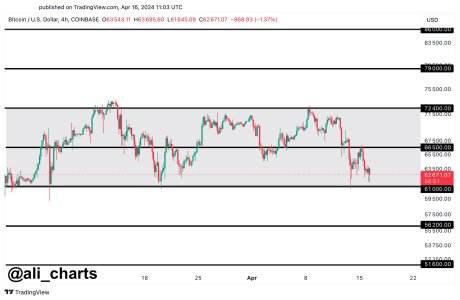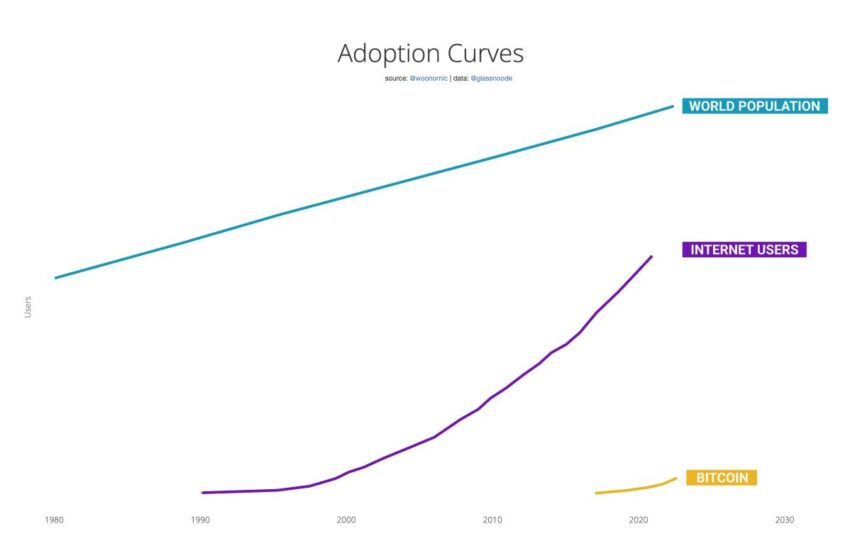2022-2-17 16:49 |
These five moments shaped Bitcoin On-Chain analysis. Down below you’ll find a basic 101 article that reviews the basic concepts of the trade. If you have any problem with the list, David Puell is to blame. He’s a full-time on-chain analyst and the creator of MVRV and Puell Multiple. He didn’t include the metrics he created on the list, which says a lot.
Related Reading | Lessons From Reason’s “The Fake Environmentalist Attack on Bitcoin” Mini-Doc
In the following article, there’s also something for on-chain analysis experts. A side game called: Did your favorite moment make it?
1. ByteCoin invents cointime destroyed in 2011, the very first on-chain metric ever, still used today, and first metric to detect holding behavior in any financial asset.
— David Puell (@kenoshaking) February 17, 2022
Anyway, let’s get into it.
On-Chain Analysis Moment #1- ByteCoin Invents Coin Days Destroyed (CDD) AKA Coin Time DestroyedInvented In 2011, according to Puell, CDD is “the very first on-chain metric ever, still used today, and first metric to detect holding behavior in any financial asset.” How does the metric detect holders, though? According to Glassnode Academy, “Coin Days Destroyed is a measure of economic activity which gives more weight to coins which haven’t been spent for a long time.”
So, the first eureka moment was to get the coin’s age into the equation. That way, the all-important holders also entered. Glassnode again:
“It is considered an important alternative to looking at total transaction volumes, which may not accurately represent economic activity if value was not stored for a meaningful time. Conversely, coins held in cold storage as a long term store of value are considered economically important when they are spent as it signals a notable change in long-term holder behaviour.”
BTC price chart for 02/17/2022 on Gemini | Source: BTC/USD on TradingView.com 2. Moment #2 – Willy Woo and Chris Burniske Invent NVT RatioThis one emerged in 2017, and, according to Puell, it’s “where on-chain begins its Golden Age and became clearly an ecosystem of specialists”. It’s also “the first application of traditional economic/financial concepts to Bitcoin”. But, what’s the NVT Ratio specifically? Glassnode Academy responds:
“Network Value to Transactions (NVT) Ratio describes the relationship between market cap and transfer volume. Per Willy Woo, its creator, NVT can be considered analogous to the PE (price to earnings) Ratio used in equity markets.”
Another way to look at it is, “NVT is that it is the inverse of monetary velocity, comparing two of Bitcoin’s primary value propositions”. Those are store of value Vs. settlement/payments network.
3. @nic__carter and @khannib invent realized cap in 2018, the single most important and robust metric in the field, and first verifiable discovery of the cost basis of any asset.
— David Puell (@kenoshaking) February 17, 2022
On-Chain Analysis Moment #3 – Nic Carter And Antoine Le Calvez Invent Realized CapitalizationCreated In 2018, Puell thinks Realized Capitalization is “ the single most important and robust metric in the field, and first verifiable discovery of the cost basis of any asset”. But, what is it exactly? According to Glassnode Academy, Realized Capitalization also makes on-chain analysis look into the age of the coins.
“Realized capitalization (realized cap) is a variation of market capitalization that values each UTXO based on the price when it was last moved, as opposed to its current value. As such, it represents the realized value of all the coins in the network, as opposed to their market value.”
Ok, “realized cap reduces the impact of lost and long dormant coins, and weights coins according to their actual presence in the economy of a given chain”. How does it do it, though? Glassnode again:
“When a coin that was last moved at significantly cheaper prices is spent, it will re-value the coins to the current price, and thus increase realized cap by a corresponding amount. Similarly, if a coin is spent at a price lower than when it was last moved, it will re-value to a cheaper price and have a corresponding decrease on realized cap.”
Moment #4 – Dhruv Bansal Invents HODL WavesCreated in 2018, HODL Waves is the “last major primer in on-chain analysis, first metric to segregate supply into different conceptual frameworks”. According to Purell, it’s also the “most comprehensive economic time analysis on Bitcoin to date”. Surprising no one, HODL Waves also looks at the age of the coins. According to Glassnode Academy:
“HODL Waves provide a macro view of the age of coins as a proportion of total coin supply. This provides a gauge on the balance between short term and long term holdings. It can also indicate where changes in this age distribution occur as the thickness of HODL wave bands change in response to dormant coins maturing, or when old coins are spent, resetting their age into the youngest category.”
5. @ErgoBTC releases the forensics of PlusToken in 2019, the grey swan that defined the market structure of Bitcoin for that year and first relevant nation-state attack on the asset.
— David Puell (@kenoshaking) February 17, 2022
On-Chain Analysis Moment #5 – Ergo Releases The Forensics Of PlusTokenThis famous case happened in 2019. According to Purell, it’s “the grey swan that defined the market structure of Bitcoin for that year and first relevant nation-state attack on the asset.” For a report on the situation, we had to consult Crypto Briefing, who spoke to:
“Ergo, the lead researcher of the report, told Crypto Briefing in an email that the most striking feature of this scam was its size. “Billion-dollar scams are very rare,” they said. “We did not expect the previously reported 200K BTC volumes to be accurate, but they were.”
Related Reading | Bitcoin On-Chain Demands Suggests That The Market Has Reached Its Bottom
The Ergo team also explained why the laundry of the funds didn’t work that well. It was because they practiced “self-shuffling.” What’s that, you ask? Crypto Briefing again:
“It refers to the “repeated UTXO splitting and merging in hundreds of transactions,” according to the report. This method was both easy to track and the most common way in which PlusToken funds were handled.”
This case wouldn’t be complete without a big institution’s involvement. This time, the suspect is Huobi:
“Huobi played a major role in off-loading these funds too, with nearly 250,000 addresses associated with the PlusToken funds. These addresses were reduced to two clusters which were identified following the incompetent privacy standards.”
Of course, those are just suppositions. When it comes to the giant Huobi, nothing’s been proven.
Feature Image by analogicus on Pixabay | Charts by TradingViewSimilar to Notcoin - Blum - Airdrops In 2024
Basic Attention Token (BAT) íà Currencies.ru
|
|








